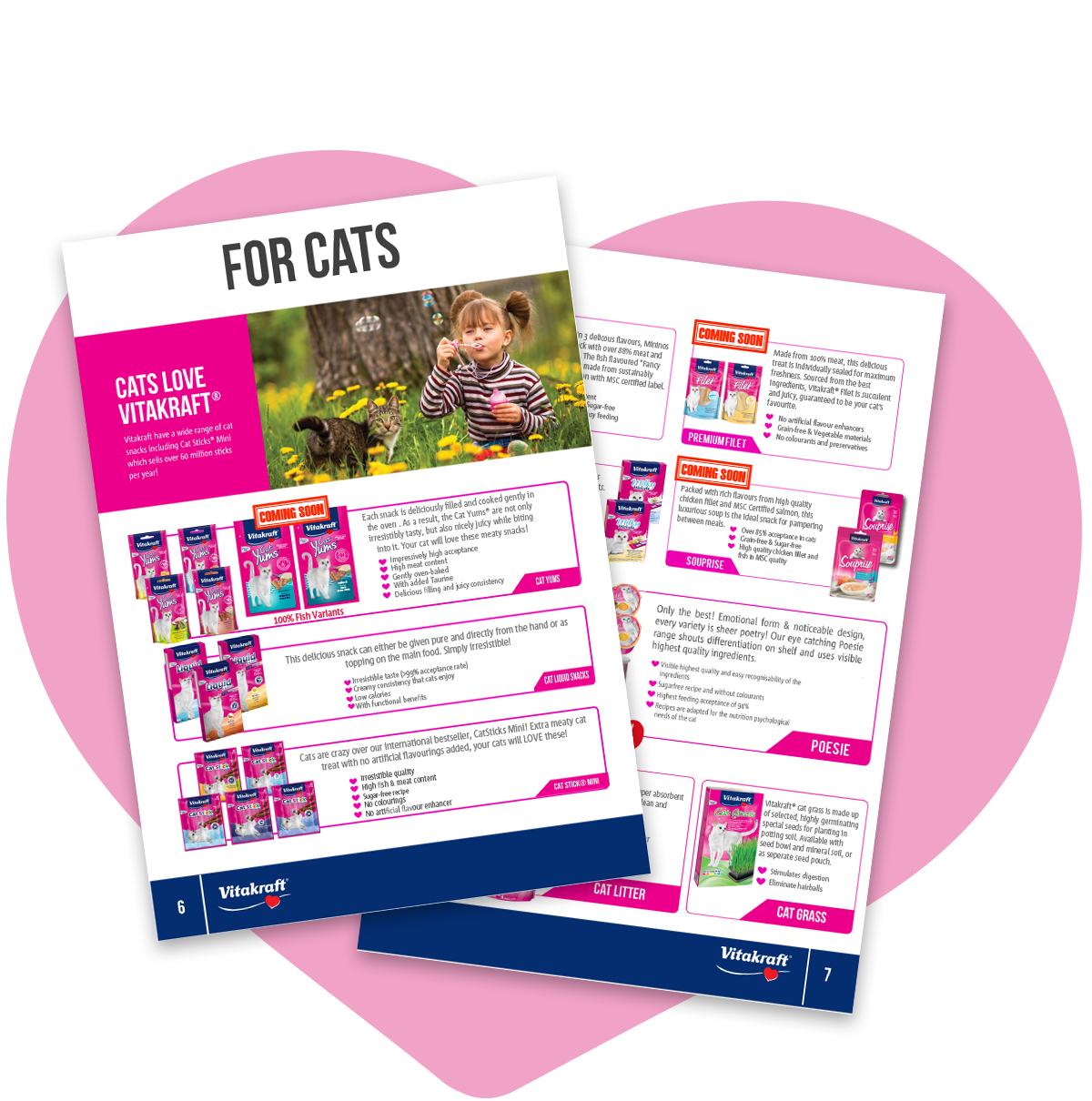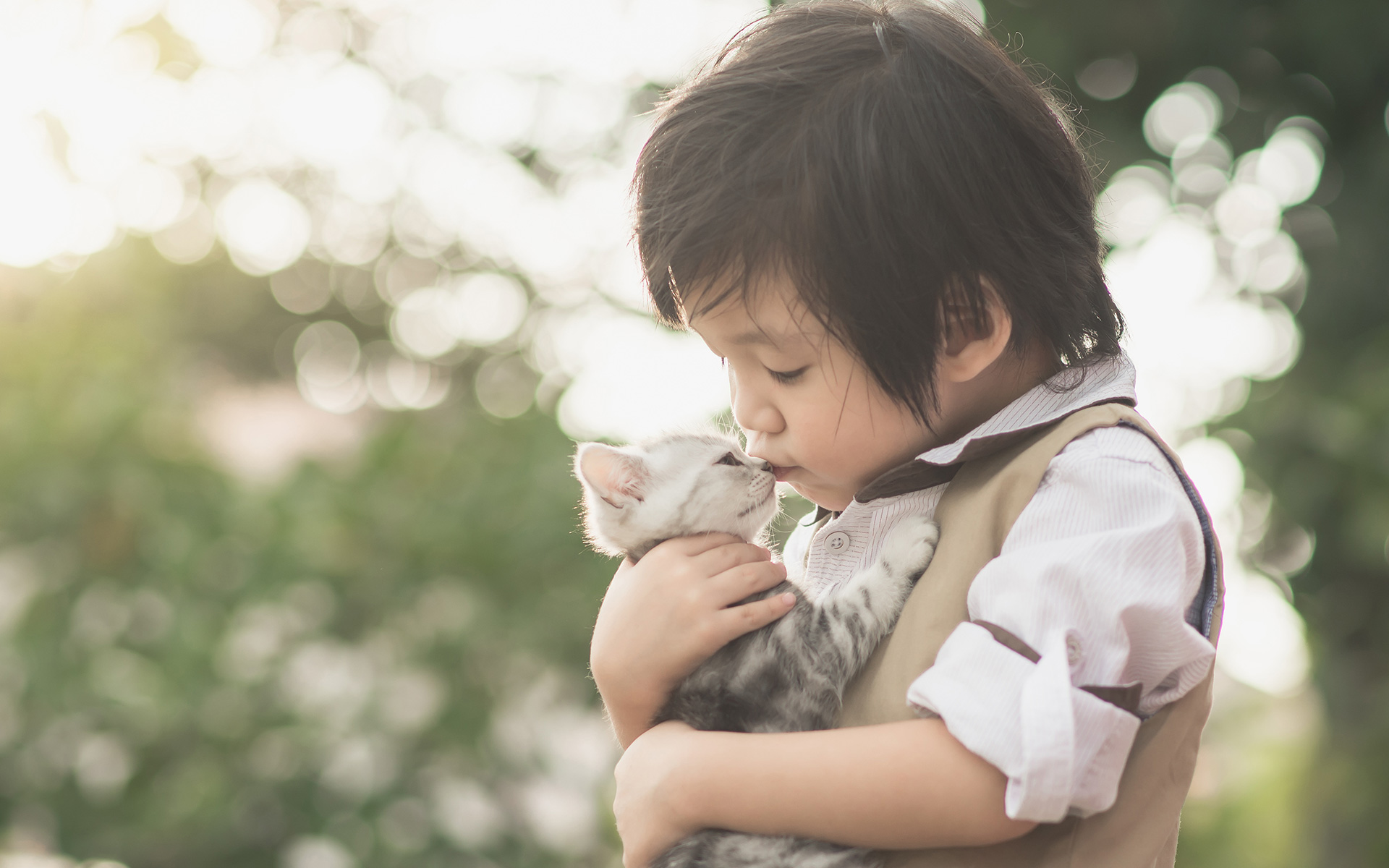
Vitakraft.
The best care for your cat.
Find everything that promotes a healthy & happy lifestyle for your furry friend. Vitakraft is high-quality in Foods, Treats, Toys and Accessoires – for the benefit of each indiviual cat.
Check out our Cat page and get all information & support you need. Vitakraft. With Love.
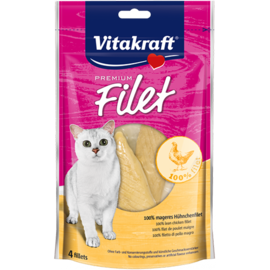
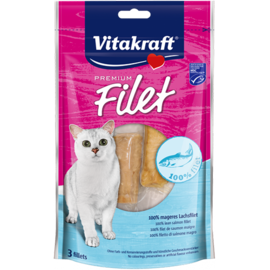
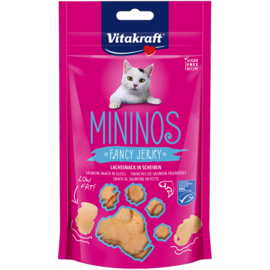
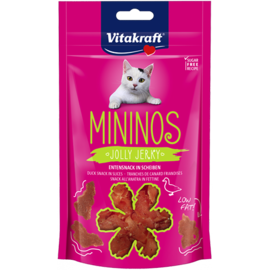
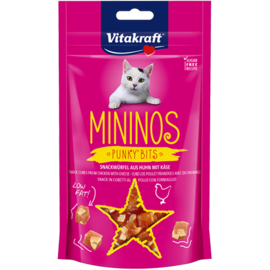
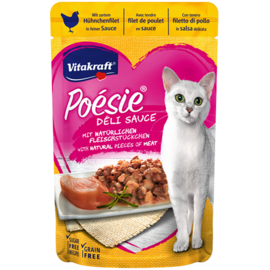
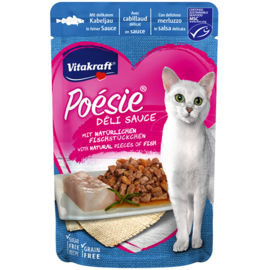
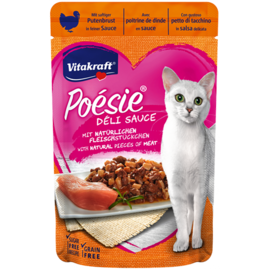
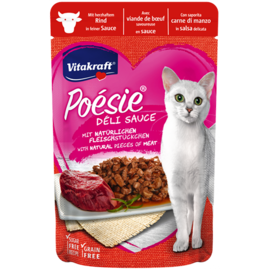
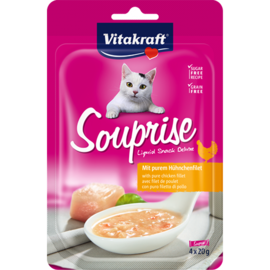
Here you'll find the most important information for you and your cat. Just click on the tab to read the full text.
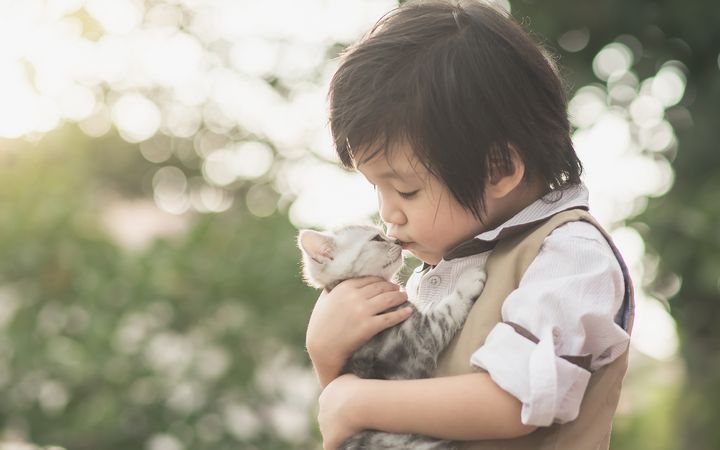
Pedigree cat or "normal" house cat? Every cat has its own unique character, and its breed plays only a small part. The type of cat you decide upon is therefore primarily a matter of personal taste. Our breed portraits will help you decide.
Many cat lovers acquire their pet by chance, for example when a cat belonging to a friend has a litter of kittens that need new homes. Cats can also often be found for sale in the classified ads of local newspapers. Pet shops can likewise help individuals searching for a new cat and may have a notice board advertising kittens or cats looking for a new home. Animal rescue centres are another excellent place to look as they always have cats in need of a loving new family.
Pedigree cats are best bought from a responsible breeder. You can obtain addresses from your vet, local cat breeding association or pet shop.
• Lively and animated behaviour
• A soft, glossy coat
• Light coloured gums (red patches may be a sign of inflammation)
• Dry, warm nose (free of discharge or mucous)
• Clear eyes
• Clean ears
Checklist for initial equipment
To really feel at home, a cat needs certain accessories in addition to food:
• A cosy place to curl up that belongs to the cat alone
• Food bowls (e.g. stainless steel) and a drinking bowl
• Litter tray with an edge that curves inwards
• Cat litter that absorbs odour, e.g. Vitakraft MAGIC CLEAN®
• Litter shovel for removing cat waste
• Toys to keep your cat occupied, e.g. a small ball
• Comb and brush for grooming
• Scratching tree for climbing and sharpening claws
• Cat carrier for when visiting the vet
• Main food for daily nutritional requirements
• Snacks for use as a reward, e.g. Vitakraft Cat-Stick® mini
Cats are very clean animals and will clean themselves thoroughly several times each day. They do, however, need a little extra assistance on occasion.
Grooming
Short-haired cats need to be brushed now and then when moulting in spring. Long-haired cats need to be groomed regularly using a special metal comb so that their coat remains smooth and glossy.
Claws
Cats that live indoors may need to have their claws clipped on occasion. Your vet will be happy to show you how to do this properly.
Most cats are afraid of water and should therefore be bathed only when absolutely necessary. If you do bathe your cat, be sure to use a mild cat shampoo.
Remove dirty litter from your cat's litter tray on a daily basis and top it up with fresh litter. Wash out the entire litter tray once each week using hot water and replace all the litter. When using some types of cat litter, the interval between replacing the litter can be longer, e.g. when using
Vitakraft MAGIC CLEAN® (up to four weeks). Do not use strong household detergents on the litter tray. Cats have very sensitive noses!
The love affair between people and cats began in ancient Egypt. And it was cats who made the first move into human surroundings: the cereal stores filled by humans attracted large number of mice, and cats were happy to take on the job of mouse hunters. This made them so valuable to the people of the time that cats were even revered as gods.
Cats exude a sense of peace and contentment and can behave almost like people at times. They display affection through loving bodily contact and can react haughtily if they are not receiving enough attention. With their intelligence and pronounced ability to pick up on moods, they know exactly how their human owners are feeling.
Whether living as part of a family or keeping someone company in a single-person household, cats are highly adaptable and can fit in with (almost) any living circumstances if handled with love. They can even grow accustomed to life in an inner-city apartment if brought up in this environment and given a great deal of attention.
A new member of your family
To begin with, a new cat will need a little time to get to grips with the unfamiliar environment. If you stay nearby and speak softly to it, it will soon explore its new territory with interest and start to feel at home.
Cats greet "their" people by rubbing their heads against them, and will also react to their feline friends in the same way.
Cats love the company of people. However, they can also make friends with others of their same kind, although it is best if each cat has its own territory within your home.
Two cat siblings usually get along particularly well. However, it is also possible to keep a young cat together with an older one. It is important to ensure that each animal has its own food bowl and that the older cat continues to receive the same amount of attention as before.
Cats require very little training as they are instinctively aware of the correct way to behave; for instance, using the litter tray. Cats are naturally very clean and often learn how to use the litter tray from their mother. However, you should still place a young cat in the litter tray after every meal. It will then quickly learn that this is the right place to do its "business". Since the litter tray is the only place in your house where the cat can dig, it will often seek it out instinctively. And if it has a little accident: VITA® Clean stain remover from Vitakraft has a disinfectant effect, removes stains and neutralises odour.
Domesticated cats are still hunters at heart whose bodies are designed to digest meat and high-energy animal proteins.
However, cats are not just carnivores: they also ingest vegetable matter rich in vitamins from the stomach contents of their prey. Our house cats therefore need a balanced, protein-rich diet that meets their special nutritional requirements. As true connoisseurs, cats also love variety – and the Vitakraft range has something to suit every taste.
Main food:
A main food, such as tasty VITA LIFE®, covers your cat's basic nutritional requirements.
Snacks:
These tasty treats are primarily a way of pampering your cat. However, they must still be healthy and suitable for your pet. Some snacks even perform an additional function, such as Vita-Dent®which helps keep teeth healthy.
Nutritional supplements:
Dietary supplements like Vitakraft's tried-and-tested VITA-bon® tablets help to strengthen your cat and promote well-being. They meet the specific nutritional needs that can arise during certain stages of life, e.g. during periods of growth, after illness or during pregnancy.
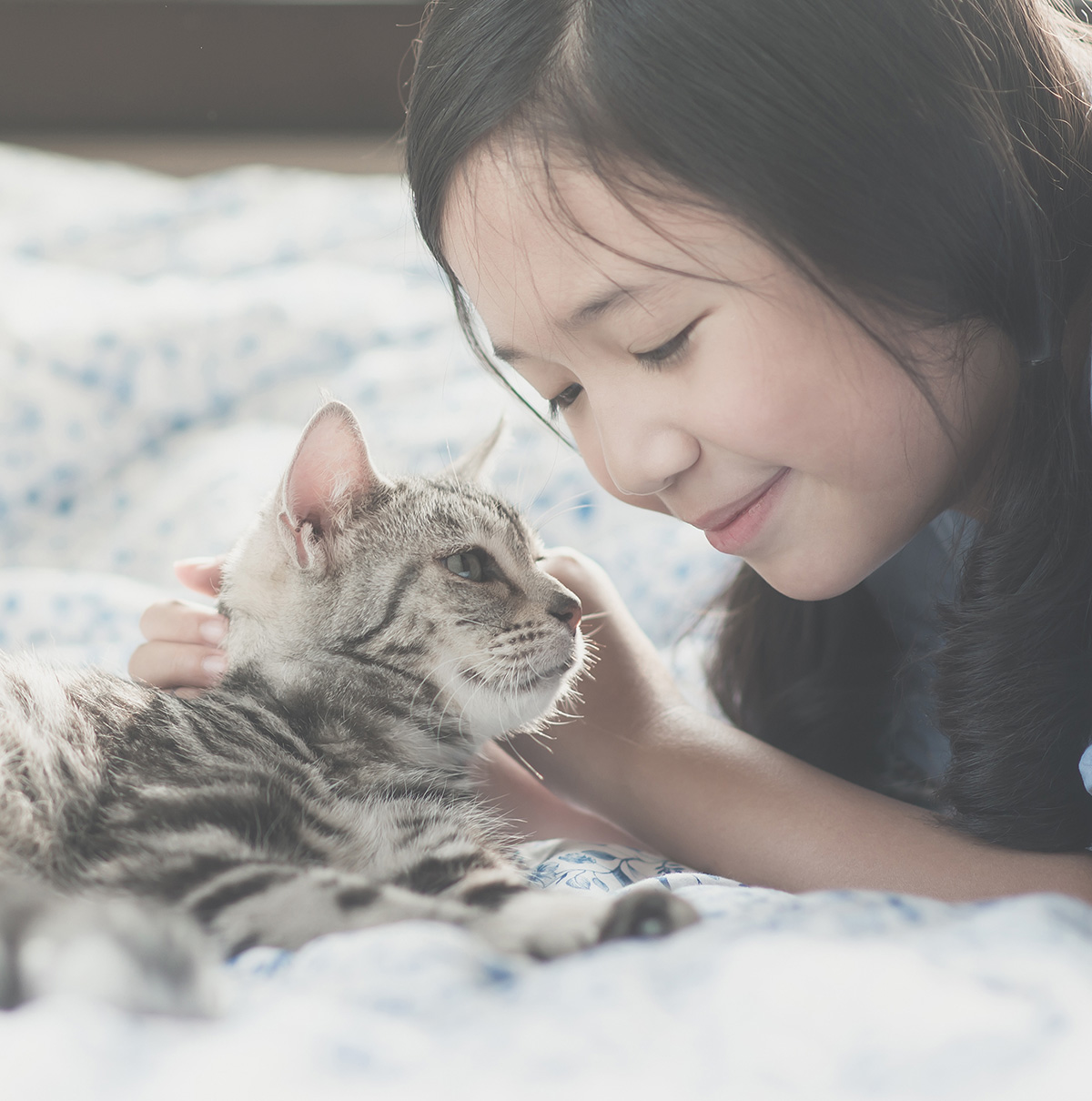
In this section, you will find photos and descriptions of a selection of different cat breeds. If you don’t see your favourite breed here, please drop us a line and check back again soon as this list is constantly being updated.
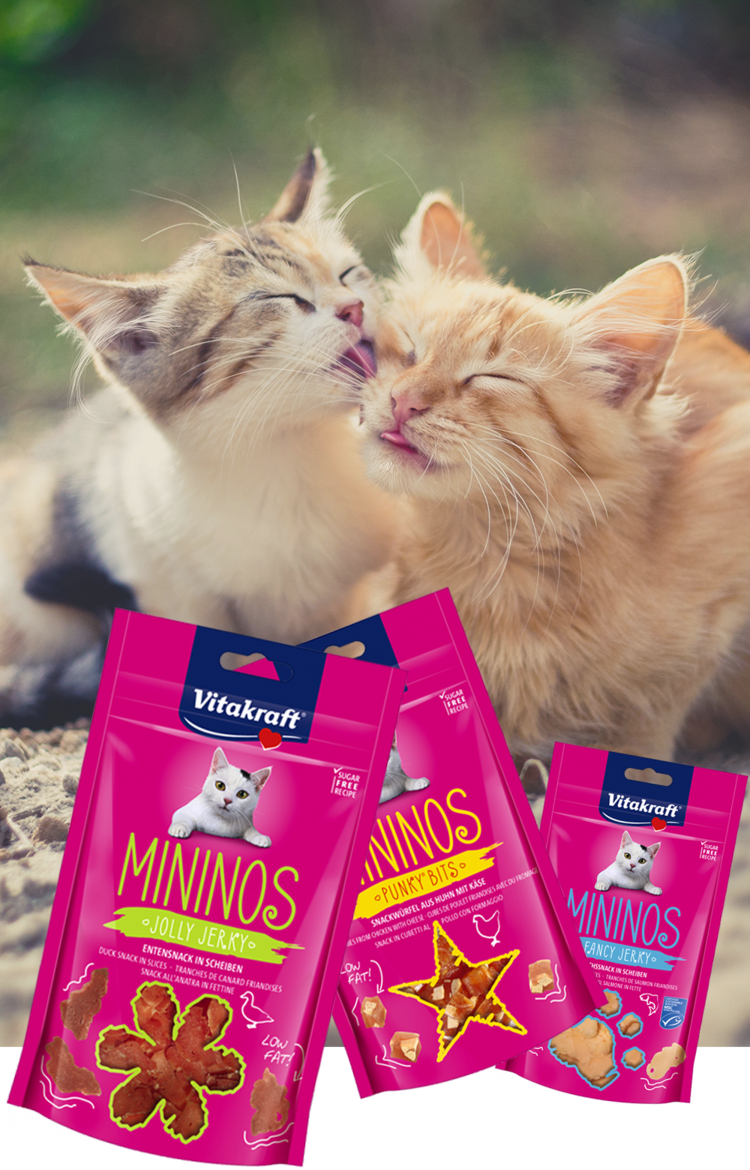
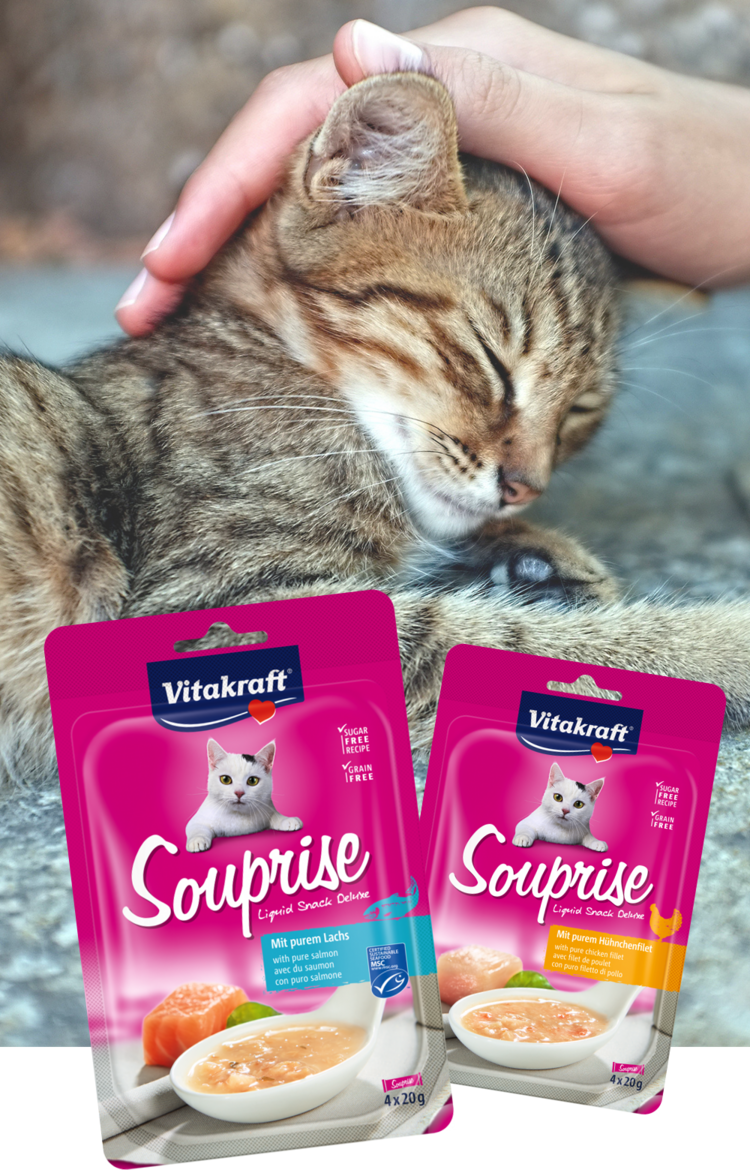
Felis catus or Felis silvestris forma domestica. The domestic cat, or housecat, is the superordinate term for all domesticated felines. The term is also used to refer to cats that do not belong to a specific breed.
There is a degree of uncertainty surrounding the precise origins of the domestic cat. It is, however, most likely that it descends primarily from the African wildcat, with some crossing of other wild cats also likely, an indication of just how closely related the species are. Cats come in all colours, including black, white, brown and red, and combinations. A variety of coat patterns (solid colour, tortoiseshell, tabby etc.) are also possible.
Domestic cats are individuals, each with their own personality. However, all cats do tend have an independent, wilful streak and love their freedom. Cats often form a close bond with their owners and thrive on love and attention.
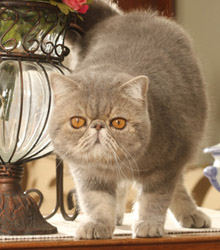
The Exotic Shorthair is a cobby, sturdy, medium to large cat with a short, thick tail. Its large, round, wide-spaced eyes, short muzzle and round, full cheeks give its broad head a very distinctive appearance. Virtually any coat colour, colour combination and markings are possible.
USA. A cross between the American Shorthair and a Persian, this breed is best described as a shorthaired Persian.
The Exotic Shorthair does not require much exercise. A homely, comfort-loving cat, Exotic Shorthairs tend to be calm, gentle and make excellent lap cats. Their intelligence is also demonstrated through their love of more lively play.
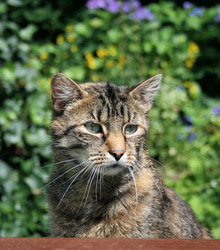
Celtic Shorthair. Often simply referred to as ESH.
A medium to large, shorthaired cat, the European Shorthair has strong legs of average length and rounded paws. It has a fairly broad head, but a bit longer than it is wide. The ears are slightly rounded at the tips
As the typical European domestic cat, it is a common misconception that the European Shorthair is not a breed in its own right. The European Shorthair is, however, a recognised breed and does take part in cat shows. Of course, not every domestic cat meets the breed standard, but this is also the case with other breeds.
The European Shorthair has an easy-going temperament and tends to get on well with other pets and children. Like most cats, it is intelligent, fiercely independent and very adaptable, able to adjust easily to a variety of new situations.
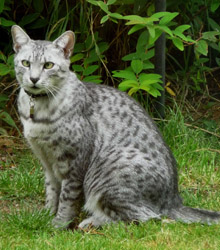
The Egyptian Mau is a medium-size, well-balanced cat with slender, elegant legs. Its most distinctive characteristic, however, is its wildcat-like body markings. The Egyptian Mau’s coat has a light base colour with dark spots on the body; spinal lines/elongated spots merge at rear haunches to form a dorsal stripe continuing along tail to tip. The legs are barred. A variety of colours and colour combinations are possible, but not all variations are recognised internationally. The most common are silver (pale silver ground colour with black or charcoal grey markings), bronze (warm coppery brown with dark brown markings) and smoke (darker grey with black markings).
The breeding of this cat began in the United States, but its ancestral lineage traces back to Egypt; its distinctive appearance clearly reminiscent of the spotted cats depicted in Ancient Egyptian artworks.
The Egyptian Mau is a very active, playful and affectionate cat. It loves an outdoor life and, for its well-being, requires an opportunity to jump and hunt. The Egyptian Mau despises solitude and thrives on attention.
A very rare breed, you are unlikely to see an Egyptian Mau outside of cat shows. Because of its unusual coat markings, the risk of theft is particularly high, meaning that they tend to be kept as indoor cats.
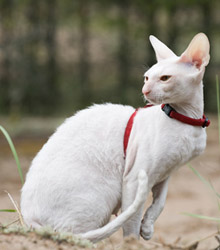
Cornish Rexes are medium-size, shorthaired cats with a very slender appearance and a long, thin tail. As has already been touched upon, its curled coat is its most distinctive feature. The curls result from the irregular growth of each individual hair. Even the whiskers curl. Since it does not have a top coat, the coat is thinner than that of other cats. Virtually any coat colour, colour combination and markings are possible.
Great Britain. Cats with curly coats have been known to appear in isolated cases in various parts of the world. The name 'Rex' refers to this distinctive curling. As the name suggests, breeding of the Cornish Rex first commenced in Cornwall. Ancestors also include straight-haired cats, however, that were crossed in to prevent inbreeding and to improve coat thickness. There are other rex cats alongside the Cornish Rex, including the Devon Rex, although a different genetic mutation is responsible for the curling in this case.
Cornish Rex tend to be calm, friendly cats. They love warm places, and are people oriented as well as affectionate. An intelligent, playful cat, the Cornish Rex does, however, have a wilful streak.
In the past, cats of this breed have been found to exhibit very thin hair, and even some balding on parts of their body. This should no longer be the case today, however. When choosing a Cornish Rex, therefore, make sure its fur is thick and covers its entire body. Even those with thicker fur are highly susceptible to the cold.
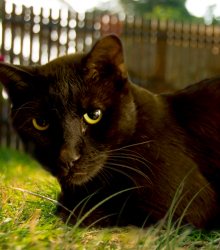
The Bombay is a medium-size, muscular cat with a lustrous, close-lying, velvety coat that has an obvious shimmering leather sheen. Ideally, the Bombay should look like a miniature Panther; always black with gold to copper coloured eyes.
USA. The Bombay was created by deliberately breeding black, American Shorthairs with Burmese to create a domesticated cat that resembled a Burmese, but with a black coat.
The Bombay is a friendly, affectionate cat that enjoys being petted. Although quite easy-going by nature, it is also intelligent, curious and playful, requiring plenty of attention and things to keep it amused.
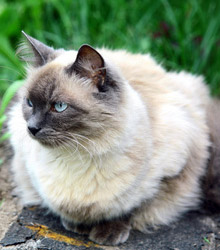
Balinese are medium in size with semi-long hair. A dainty cat, Balinese should have a long and tubular look, the shoulders and hips continuing the same sleek lines. The legs are long and proportionately slim. The head should be a long tapering wedge, medium in size in good proportion to the body. The almond-shaped, brilliant deep-blue eyes are a particularly distinctive feature of the face. It has a very soft, ermine-like coat with no undercoat. Like the Siamese, Balinese are pointed, which is actually a form of partial albinism. Colours are the same as Siamese: The base colour can be ivory to fawn with darker points on the ears, face, legs, feet and tail. These points must be a single colour, such as chocolate or red, and contrast clearly with the body colour.
In the middle of the twentieth century, a number of Siamese were born with semi-long hair, but were not recognised by the breeding associations. If fact, the emergence of such cats was kept secret by many breeders so as not to discredit their breeding programmes. The popularity of these longhair cats grew, however, and eventually breeding programmes were commenced and the name “Balinese” chosen for the officially registered breed.
The Balinese is a lively, active, yet sensitive cat. A playful breed, the Balinese is very fond of human company and likes to be kept amused, demanding a lot of attention.
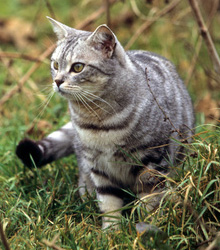
ASH
The American Shorthair closely resembles its ancestor, the British Shorthair. It is a large, muscular cat with a round, broad head. Its shorthaired coat has a dense undercoat, creating a very plush impression. The ears have rounded tips, often with little tufts of hair. All coat colours, colour combinations and markings are possible.
USA. This breed of cat is believed to be descended from European domestic cats brought to North America by early settlers and sailors to protect valuable cargo from mice and rats. Early in the twentieth century, a selective breeding program was established to develop the best qualities of these cats.
The American Shorthair loves its freedom and independence, but is also very cuddly, affectionate and domesticated. Because of its provenance, it is a very low-maintenance, easy-going cat.
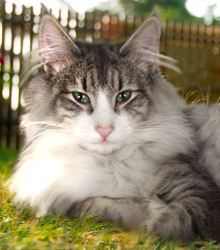
The Maine Coon is noted for its large bone structure, rectangular body shape and long, flowing coat. It has small tufts of hair on the tips of its large ears, reminiscent of a lynx. Its body is solid and muscular, but not bulky. Another particularly distinctive feature is its long, bushy and luxuriantly plumed tail. It has a relatively broad head and large eyes. Many Maine Coons have a lion-like ruff around their neck. Compared to other cats, Maine Coons are slow to mature physically; they do not usually reach their full size until they are around three or four years old. The tabby coat pattern is still a firm favourite due to its resemblance to the raccoon, but many other colour patterns and solid colours are also possible.
USA. The Maine Coon, also known as the American Longhair, is a breed of domestic cat from the US. Although its precise ancestral origins are unknown, it is thought to originate from longhaired cats brought over to America by European settlers which then bred with indigenous shorthaired breeds. The result was the modern breed of the Maine Coon; a large, semi-longhaired cat that has gained popularity both in the US and Europe. The name Maine Coon is an amalgamation of the US state of Maine and the word raccoon, an animal to which the cat bears some resemblance, due to its bushy tail and often tabby markings. A myth based on these traits, though genetically impossible, is the idea that the modern Maine Coon actually descended from the raccoon. It is much more likely that the breed has been influenced by Norwegian Forest Cat and Turkish Angora bloodlines.
The Maine Coon is a docile, gentle cat. They show such devotion to their owners that their personality is often likened to dogs. Like all cats, however, the Maine Coon enjoys its independence. Cat trees, scratching posts and toys are particular favourites, provided these are of a larger, more robust design due to the cat’s size.
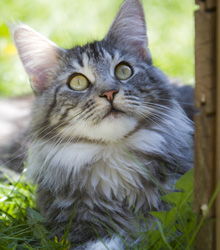
Norsk Skogkatt
The Norwegian Forest Cat is a large, sturdy, semi-longhaired cat. In winter, its thick, woolly coat becomes particularly luxuriant while in the summer months, it sheds this coat almost completely, creating a very different outward appearance. This breed is adapted to the very cold climate of its Norwegian homeland, with a glossy, water-repellent top coat and a woolly undercoat for insulation. A distinctive characteristic of this breed is the small tuft of hair on each ear, like the ears of a lynx. All coat colours are possible, with or without a tabby (or ticked) pattern. Those with ticking are particularly impressive; the markings harking back to their wild ancestry.
As the name suggests, this breed originated in Norway. The other part of its name is somewhat deceptive, however, since it is not a wild cat, but in fact a breed of domestic cat. The Norwegian Forest Cat is a very old breed; its ancestors are thought to have been brought to Norway by the Vikings.
Norwegian Forest Cats are social cats who enjoy the company of other cats and humans. They love lively play, so will particularly appreciate a large, stable scratching post and plenty of toys. Whatever their personality, however, they also thrive on plenty of love and attention.
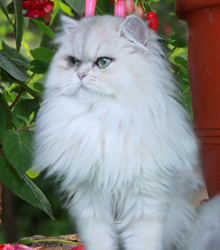
Da es die Perserkatze in unzähligen Farben gibt, gehört genau genommen die Farbe zum Namen dazu. Siehe auch unter „Äußere Erscheinung“.
Die Perserkatze ist eine mittelgroße bis große, kräftige Katze mit einem stabilen, etwas gedrungenen Körper. Verstärkt wird dieser Eindruck natürlich noch durch das üppige Fell. Das Gesicht ist geprägt von den großen, runden Augen, der gewölbten Stirn und der kurzen Nase. Ist dieser Typus aber zu stark ausgeprägt, so kann es zu Problemen kommen, z.B. zu Atembeschwerden. Die Perserkatze gibt es wirklich in jeder Farbe – sie hat dadurch unter den Rassekatzen die wohl größte Farbvielfalt. Daraus ergeben sich so klangvolle Bezeichnungen wie z.B. Blue-Smoke (Rauchperser in Blau) oder Silver-Tabby (Schwarz-Silber gestromt).
Ob die Perserkatze wirklich aus Persien stammt, ist nicht sicher. Auch die Türkei wird als Herkunftsgebiet genannt. Dort gibt es noch heute die Türkische Ankarakatze, die lange Zeit der Perserkatze glich. Erst englische und amerikanische Züchter veränderten das Äußere der Perserkatze hin zum heute bekannten Typ, so dass sich beide Rassen nun deutlich unterscheiden. Auch die Angorakatze, früher lediglich ein anderer Name für die Perserkatze, ist heute als andere, eigene Rasse anerkannt.
Perserkatzen gelten als sanftmütig und verschmust. Sie lassen sich nicht so leicht aus der Ruhe bringen und miauen nur wenig und recht leise. Im Allgemeinen sind sie sehr umgänglich und verstehen sich gut mit anderen Katzen und sogar mit Hunden.
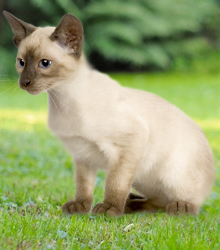
Today, following generations of selective breeding in both Europe and the US, the Siamese has developed into a medium-size, very slender, yet muscular cat. Its wedge-shaped, almost triangular head is supported by a long, slender neck and delicate shoulders. Its most distinctive feature, however, is its coat and markings. The Siamese is characterised by its typical pointed colour scheme: a light-coloured body with dark markings on the tail, paws and legs, ears and face. Colours can vary, but the most popular are the lighter base shades with distinct, though not too dark points. Possible combinations include fawn and seal, white and blue or cream and chocolate. Siamese always have blue eyes.
Thailand and UK. Siamese cats were first brought over to England from Siam, which is today known as Thailand, at around the turn of the century. The arrival of this exotic, pointed cat caused quite a stir at the time, and soon prompted various breeding endeavours creating a number of variations.
Siamese are very affectionate, intelligent and cuddly. They are also known for their voices. Few other cats are as vocal as the Siamese. Siamese are very social cats and do not like being left alone. They demand a lot of attention and enjoy human company or the company of other cats.
In the past, some breed preferences resulted in serious health problems for the Siamese, such as deformed tails or crossed eyes. Due to selective breeding, however, such defects have been largely eliminated.
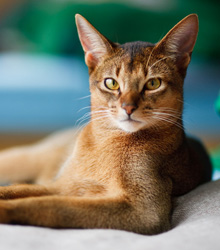
The Abyssinian is a breed of shorthair cat.
Abyssians are medium-sized, slender, but muscular cats with a long tail. The Abyssinian has a broad and moderately wedge-shaped head and alert, relatively large pointed ears. The most common and popular coat colour for the Abyssinian is known as usual (a warm reddish-brown) with black ticking. Other coat colours include sorrel (red/cinnamon), fawn and blue. The Abyssinian is known for its distinctive ticked coat, with a lighter colour at the root and a darker "ticking" colour at the tip. Its eyes can be amber or green.
It is a very old breed that may have originated in Ethiopia (formerly Abyssinia). The modern Abyssinians, however, can be traced back to nineteenth century England, when a number of cats were brought over from their homeland and bred with British Shorthair and later also with Siamese.
Abyssinians are extroverted and intelligent. They despise solitude and will frequently and enthusiastically instigate play with their owners. They also enjoy the company of other cats. Abyssinians are affectionate, but also wilful.
Before breeding, it is imperative that all Abyssinians be tested for RTA (progressive retinal atrophy), a hereditary condition that initially causes night blindness and eventually leads to complete blindness.
